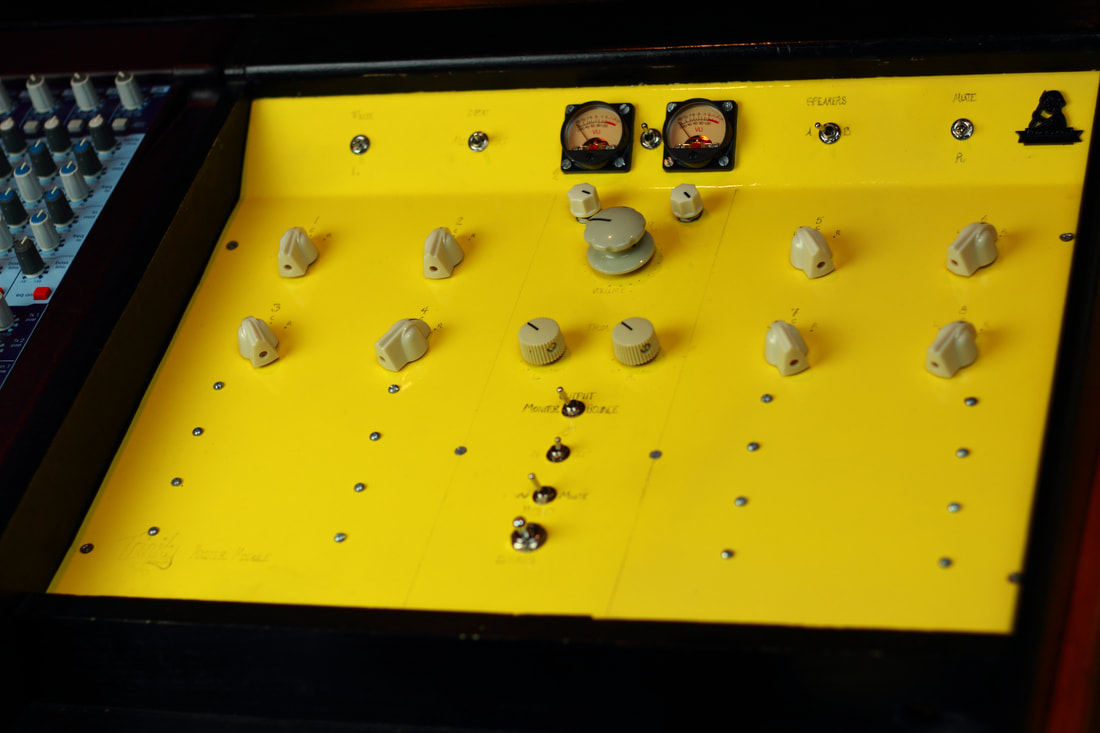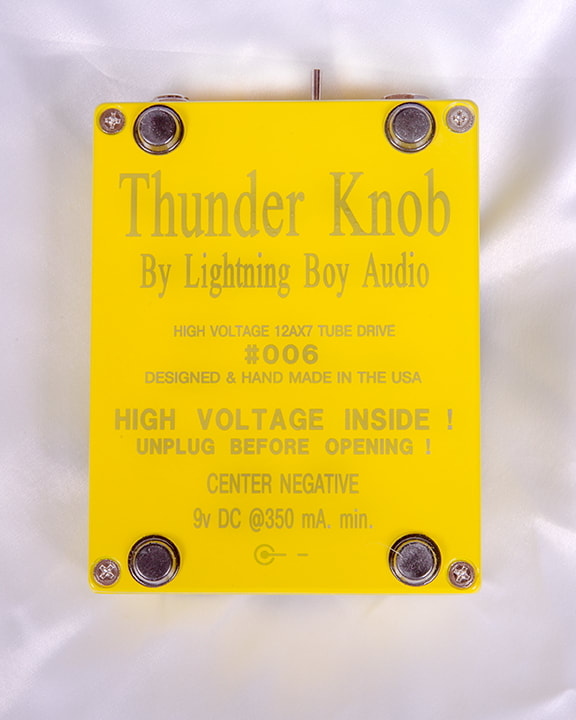|
I decided to take her apart last week to make some modifications. The previous amplifier topology was SRPP, which worked well, but after hearing a number of my mixes through this board I felt it was too colorful. Yes, there's such a thing as too much color! Plus, the tone of SRPP amplifiers is slightly gritty IMO. I wanted a smoother cleaner tone, like what I'm getting out of my Trinity channel strips. That required a new power supply for the board, more tubes, and a whole lot of work. But, now that its done and working I can say it sounds exactly as I had hoped... maybe better! I also needed to add a couple extra controls that I felt were necessary after working with this board for about a year. I added a VU meter kill switch (sometimes I like slamming the output of the board, which pegs the VU needles). I also added VU meter L/R calibration pots. I felt like the meters were too arbitrary before, so now I can dial them in exactly. Lastly, I changed the role of the trim pots from being amplifier input volume controls to output attenuators (post output transformers). This just makes a whole lot more sense to me, because now I can attenuate any noise from the amplifier stage when I attenuate the volume. Speaking of noise, that was a subtle trade-off switching from the SRPP output stage to what is now single-ended. Simplicity and noise rejection are the hallmarks of the SRPP topology. Super sexy tone, low noise (practically as good as SRPP), wider frequency response, greater degree of amplification, and much lower THD are the benefits of the Trinity design, which is a single-ended, Class A, ultra-linear pentode amplifier. I you want to hear the board before all this, you can check out my past work at www.lbastudios.com. It will be a little bit before I can get some new mixes done through the updated board. I'm really looking forward to it though!
0 Comments
LBA will be at the NAMM convention in January in Anaheim, CA. LBA pedals will be featured on a pedalboard, hooked up and ready to demo at a shared booth, thanks to the Deli Magazine/StompBox Exhibit. The Stompbox Exhibit will be supplying a headphone/amp sim rig for testing. Not an ideal demo scenario, but better than none! Stomp on by to check out the Op-2 Comp, the Thunder Knob, and hopefully something new and very special! Hint hint. ;-)
Seems like most people simply don't understand how and when electricity can actually kill you or not. I put warnings on my pedals to let people know there is high voltage inside, but rest assured, it can't actually kill you. High amperage alternating current is what kills. That simply does not exist in my pedals or anything I build. My tube gear runs on low current DC. Sure the voltage is high, but the voltage is not what kills. For instance, the Thunder Knob runs at about 200 volts DC internally, but there's only 100mA of that hanging out. I've been shocked by it and I'm still alive and well. In fact, I had the misfortune of getting shocked by 400 volts at 250 mA. That was a bad day. Once again, still alive. There's a lot of misconceptions about high voltage tube gear on the internet. I've probably been shocked by high voltage DC a couple dozen times in my life and even AC from the wall outlet a few times. Still alive. I have to put the warnings on things because I don't want anyone to go poking around with the power on. A shock is not pleasant. Very high voltage, high amperage DC could potentially cause burns or worse, but that's just not possible with the stuff I build. The warnings you see at power substations and on high voltage power lines is very real. That's high voltage, high current AC... a very different beast altogether. Remember those stories of Edison trying to discredit Tesla's AC electricity by publicly electrocuting animals? Edison was touting his DC as a safe form of electricity, which it is for the most part.
Shane from intheblues youtube channel demoed around 500 pedals this year. This video is of his favorites from 2017. Looks like the Thunder Knob made the cut! I've been taking my time on the design on Trinity. I want to make sure its absolutely perfect through and through. Its really something I see as my greatest endeavor. I certainly have vastly more money and time tied up into the R&D of this than anything I've done before. It has to be as perfect as I can make something or it can't be released. The image above is the latest prototype... #008. Please bear in mind there are many more than 8 revisions. This is just the 8th completed unit. Upon building this I decided I want to make some changes to the front and rear panel layouts with the next build. In this particular build I massively fine tuned the electronics. In previous builds there was some (inaudible) subharmonic noise when the EQ was engaged. I redesigned the EQ amplifier stage and added an extra transformer to the EQ stage (interstage transformer). This eliminated all the noise issues. This is the first Trinity with a printed circuit board incorporated. Hold on! The PCB is 100% related to the onboard power supply section. All of the audio is still point to point wired! With the next Trinity, the power supply will have a discrete time delay circuit added to power on the high voltage B+ after the tube filaments heat up. Its been breadboarded and designed in the computer already. I'm feeling very confident the next build will be the first production model. I'm also very excited for when that moment arrives! You can check the fine details of this product on the Trinity product page or you can hear its sounds in action by checking out my recent productions for hire over at http://www.lbastudios.com
|
Details
About the AuthorMike Congilosi II, Owner/Designer/Electronics Engineer at Lightning Boy Audio and Owner/Audio Engineer/Music Producer at LBA Studios. Archives
July 2025
Categories |

 RSS Feed
RSS Feed



